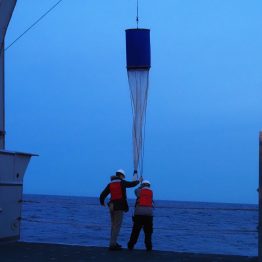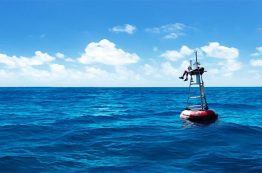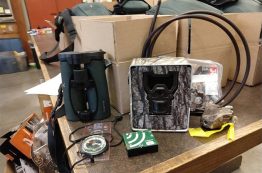Being in the middle of the ocean on a giant research vessel can be surreal — in every direction, there’s water as far as the eye can see. For 17 seniors in the UW School of Oceanography, this was their reality for nearly two weeks as they conduct research for their thesis off the coast of South Africa. “You’re so far from the coast, you forget the rest of the world is there,” says Ashley Lobao, an Oceanography student.
Read more »Spirits kept afloat at the School of Oceanography
A flip of a crepe, a picture of a pet, home experiments testing the best pretzel topping…these are just a few of examples of how people in the UW School of Oceanography are trying to keep the feeling of community afloat. Like nearly all of us, the school went from in-person interaction with colleagues, classmates and professors to virtual interaction in the blink of an eye.
Read more »How to move ‘hands on’ classes online
Every spring, Laura Prugh teaches a wildlife research techniques class at the University of Washington. Her students spend much of their time outside, complementing their lecture notes with actual experience. They learn to identify and properly handle animals — frogs, salamanders and bushy-tailed woodrats, for example — and they practice using equipment for tracking animals and estimating populations. But when the UW announced it was moving its spring quarter 2020 classes entirely online to combat the novel coronavirus, Prugh and other instructors across campus faced a new, unchartered challenge.
Read more at UW News »Three UW Environment students awarded National Science Foundation Graduate Research Fellowships
Three graduate students from the College of the Environment have been awarded the National Science Foundation (NSF) Graduate Research Fellowship, which recognizes and supports outstanding graduate students in science, technology, engineering and mathematics. This year’s awardees include Irita Aylward and Zoe Krauss from the School of Oceanography, and Helena McMonagle from the School of Aquatic and Fishery Sciences. NSF Fellows are anticipated to become knowledge experts who can contribute significantly to research, teaching and innovations in science and engineering.
Read more »New radar technology sheds light on never-before-seen Antarctic landscape
17,000 years ago, Seattle was covered by an ice sheet that stood over 3,000 feet tall (for reference, the current tallest building in Seattle, the Columbia Tower, is just under 937 feet). As the ice advanced and eventually receded, it carved massive valleys, mountains and lakes into the earth to create the glaciated land and seascape we recognize today. These landscapes not only remind us of the area’s ancient glacial past but also provide tools to understand and predict future patterns for glaciers.
Read more »





